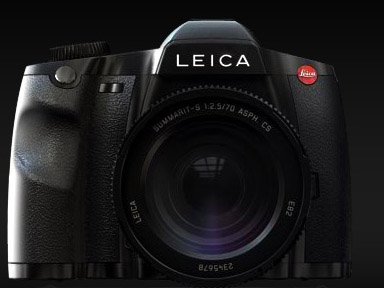Why you can trust TechRadar
In answer to the rather flippant question posed at the start of this article: what your £20,000 buys you is image quality, and lots of it.
All medium-format cameras are capable of capturing high levels of resolution, and the Leica is no different. Pixel-peeping on screen reveals images to be packed with fine-detail, and completely free of the artefacts you'd see in conventional DSLR images at 100 per cent.
Some of this is down to the lack of antialiasing filter in front of the sensor, which all cropped-sensor and full-frame DSLRs have, but there are other medium-format advantages too.
A larger sensor means there is space for more pixels, bigger pixels and more space between pixels. This gives increased resolution as well as increased dynamic range.
The use of 16-bit electronics (as opposed to 14-bit in conventional DSLRs) means better tonal gradation and colour reproduction too. If you've never seen a file from a digital medium-format camera before then you should try to at your local camera dealer: the quality really is like nothing you'll have seen before.
S-system lenses
The secret to the Leica S2's performance also lies in its optics; all the pixels in the world won't give you good image quality if the image projected into them is lacking in resolution. Leica has always been known for its expertise in lens design, so it's no surprise that the four currently available S-system lenses are stunners.
A 35mm f/2.8 (equivalent angle of view to a 28mm lens on a full-frame camera) is accompanied by a 70mm f/2.5 standard lens (equiv. 50mm), a 120mm f/2.8 macro (equiv. 85mm) and a 180mm f/3.5 telephoto.
As well as being very sharp, even wide open, these optics show very little distortion, generate good levels of contrast and colour saturation and are ridiculously resistant to flare.
In terms of image quality alone, the Leica S2 body is not much different from any other medium-format camera, but the lens quality is something very special. The internet rumour mill predicts more focal lengths too, from ultra-wide angle optics to perspective-control lenses and even a zoom.
Leica, unsurprisingly, is tight lipped about what might be in store for the S-system in the future; although if we were giving them some advice it would be to prioritize a more conventional wideangle above the more exotic focal lengths.
Something that approximates to the same field of view as a 35mm lens on a full-frame camera would fill an obvious gap in the existing line-up.
Other aspects of the camera's performance seem lacking when compared to professional Canon and Nikon cameras costing a tenth of the price, but are better or identical to other medium-format systems.
The S2's autofocus, for instance, is not what you'd expect if you are a DSLR user: only a single AF point and a speed that, while fast, doesn't set the world on fire.
That said, it's faster and seems more confident than equivalent systems from Hasselblad or Mamiya/PhaseOne (It's worth noting that this is Leica's fort foray into such an AF system too).
The camera's multi-pattern exposure metering system is about standard for today's breed of cameras – it gets confused by predominantly light or dark scenes, but delivers good results for more average subjects. Centre-weighted and spot options are also available.
Sensitivity
Noise and ISO sensitivity is something that medium-format cameras have never excelled at, and while the Leica makes some advances, the ISO options available sound pedestrian compared to that which you'd find on even entry-level, cropped-sensor DSLRs.
The camera's base ISO (where you'll find the best image quality) is ISO 160, and sensitivity goes up from here in whole stops (half stops would be nice). At ISO 320 you can see some noise if you look hard enough, but the noise reduction features in any raw processing software make this a non-issue.
By ISO 640 there are definite signs of noise, but depending on the subject you are shooting this is not a deal breaker. The maximum ISO setting of ISO 1250 is too noisy, in our opinion, for professional-publication quality results.
Leica is listening to feedback, though. Something that was criticized in the early days of the camera is the speed with which it shoots when tethered to a computer. The DNG Raw file format may have all manner of advantages, but it is also very big in physical size.
Combine this with Leica's crazy choice of USB connectivity instead of FireWire and this originally meant a wait of between 10-12secs between shooting and seeing the image on-screen.
Some firmware tweaks and incorporation of lossless compression into the DNG format have brought this time down to approx. 7-9sec, but this is still much longer than competitor cameras from Hasselblad and Phase One.
This might sound like a petty thing to pickup on, but tethered shooting is the de facto way of working for many fashion, advertising and portrait photographers – exactly the audience that Leica is aiming at with the S2.
Current page: Leica S2 Review: Performance
Prev Page Leica S2 Review: Build quality and handling Next Page Leica S2 Review: Sample photos